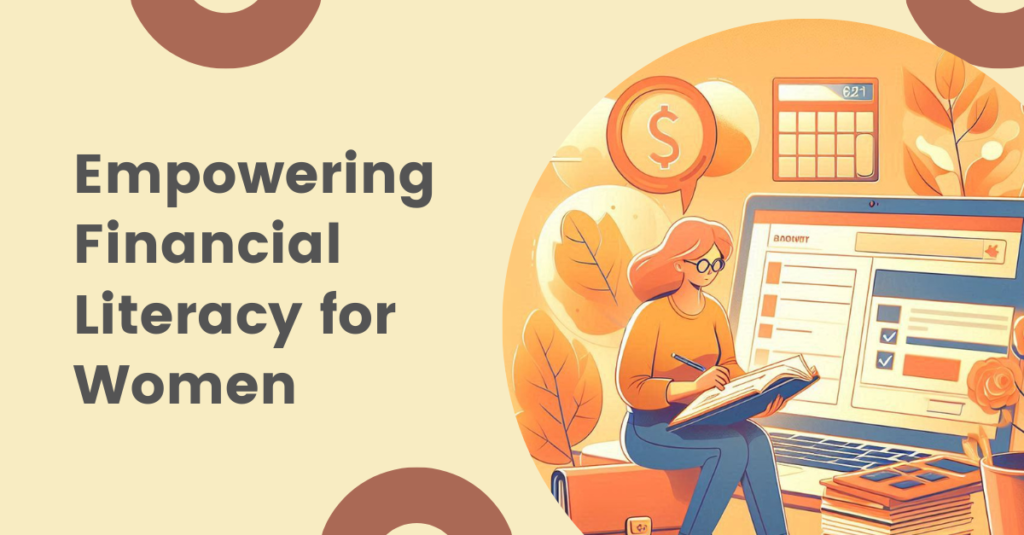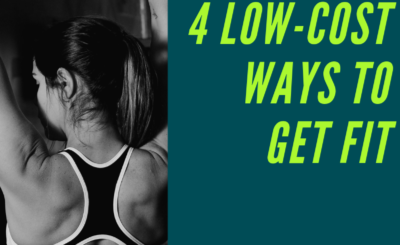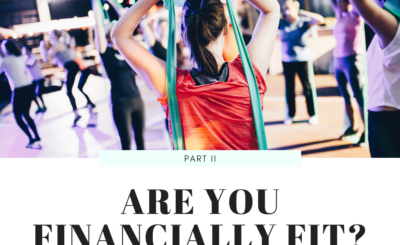
Financial literacy for women has always been a topic close to my heart and I am heartened to see that it is increasingly gaining attention.
Recently, I attended a panel on the topic of women financial literacy. I resonated with some of the points brought up by the panelists and was inspired to write this post to share some of my thoughts.
Financial Knowledge is not the same as Financial Literacy
Financial knowledge and financial literacy might sound similar, but they’re actually quite different.
Financial knowledge is about having the information—knowing the terms, understanding the concepts, and being aware of the options available. Financial literacy, on the other hand, is about applying that knowledge to make informed decisions in your own life. It’s about having the confidence and skills to manage your finances effectively, day in and day out.
There’s no shortage of information online these days, with countless financial websites and YouTube videos available. I’ve also spoken with women in the finance industry who understand financial concepts and excel at their jobs, yet some still struggle to manage their personal finances effectively.
Many women know they should make their money work harder and want to start investing to grow their wealth. But, month after month, year after year, they put off taking action. Some simply don’t have the time or energy after a long workday, while others feel overwhelmed by the information. Plus, finance and investing aren’t always the most interesting topics, and some women see themselves as risk-averse.
This gap isn’t about capability—it’s about finding the confidence and prioritizing your own finances amidst life’s demands.
What does it take for financial literacy?
1. Understanding Your Financial Situation: Knowing where you stand financially is the first step. Take time to figure out your income, expenses, debts, savings, and investments. It’s about having a clear picture of your financial health.
2. Setting Clear Financial Goals: Financial literacy involves setting short-term and long-term goals. Whether it’s saving for a home, planning for retirement, or building an emergency fund, having specific goals helps guide your financial decisions.
3. Budgeting and Managing Expenses: Being able to create and stick to a budget is crucial. It ensures that you’re living within your means and allocating your money towards your priorities.
4. Making Informed Investment Decisions: It’s about knowing how to invest your money wisely based on your risk tolerance, financial goals, and time horizon. This also involves understanding different types of investments, their potential returns and risks and selecting the suitable ones that matches your personal risk profile.
5. Protecting Your Finances: This includes having adequate insurance coverage and planning for unexpected events. Protecting your wealth is a key foundation of financial literacy.
6. Continuous Learning and Adaptation: The financial landscape is always changing. Staying informed, seeking advice when needed, and continuously learning about new financial tools and strategies are essential to maintaining financial literacy.
Ultimately, financial literacy empowers you to make decisions that benefit your own life, ensuring that your hard-earned money works as hard for you as you do for it.
The Perception vs. Reality of Women and Risk
I often hear women say “I am conservative” or “I have a low risk appetite”. As such, many avoid investments, opting instead for safer options like fixed deposits or insurance plans. While this perception has some basis in reality, it’s often more complex than it appears.
In my experience, women may avoid investing not because they are inherently risk-averse, but because they feel overwhelmed by the myriad of investment options available. The world of investing can seem intimidating, filled with jargon and complex choices. When faced with these challenges, it’s no surprise that many women choose what they know—saving and insuring—over investing.
Women Can Take Balanced Risks
Through my work with women, I’ve seen that once they gain clarity on their financial situation and truly understand the role of investing within their overall financial picture, they become more open to taking balanced risks. These are not reckless risks, but calculated ones that align with their goals and risk tolerance.
Women often just need some assurance and encouragement to take that first step. Once they start, many realize that investing doesn’t have to be an all-or-nothing game. There are ways to invest that offer a balance between security and growth, which can lead to long-term financial success.
The Value of Taking a Long-Term View
One thing I emphasize is that not taking unnecessary or excessive risks can actually be beneficial, especially for women. Women often have a longer investment horizon and this long-term view is advantageous when it comes to investing. By gradually growing your investments over time, you can build substantial wealth without needing to take on excessive risk.
Changing the Mindset Around Risk
It’s also important to change the mindset around being conservative. Being conservative with your finances is not a bad thing. In fact, it’s a prudent approach that can lead to stability and peace of mind. However, this doesn’t mean that women should completely avoid risk. It’s about finding the right balance—taking enough risk to grow your wealth, but not so much that it keeps you up at night.
No One Size Fits All
Understanding your own risk profile and how much risk you can take is key. It’s not about fitting into a stereotype; it’s about what works best for you. CPF has a useful Risk Tolerance Questionnaire which can give you an indication of your risk tolerance.
Some women may find they are more comfortable with lower risk instruments as a start, and that’s okay. Others may discover they can take on more risk than they initially thought, especially when they see investing as a way to achieve their broader financial goals.
Set aside some time with yourself to figure out what works best for you. Alternatively, work with a professional advisor who understands you and can guide you through the process to craft out something that aligned to your values and goals.
Take the First Step
The key is to start small, seek guidance, and stay informed. With the right support, women can become savvy investors who take balanced risks, grow their wealth, and secure their financial independence.
So, take that first step—start learning, start asking questions, and start investing in your future today.
To Your Success and Happiness,
Yong Hui






